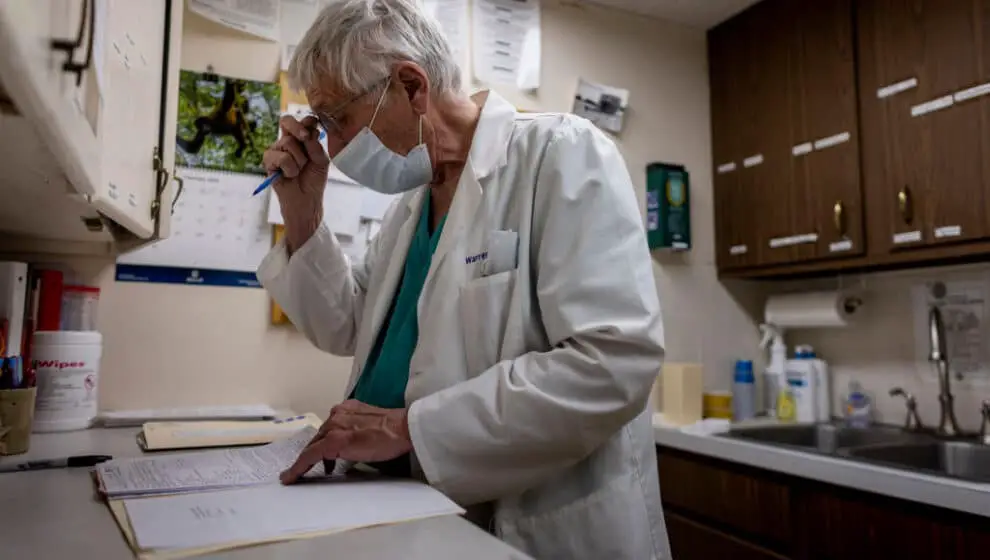Partly because of increased paperwork, more doctors are retiring early, and fewer are entering the field, resulting in a troubling physician shortage that may soon have greater effects on the medical community.
Key Details
- Pandemic pressures led to many doctors experiencing burnout and looking for early retirement.
- Around 75% of healthcare workers are expected to leave the industry by 2025, according to an Elsevier Health survey.
- The Association of American Medical Colleges (AAMC) projected that the healthcare system would be short 139,000 physicians by 2033, in a 2020 report.
- Fewer new healthcare workers are entering the field, and many specialty physicians are aging out in the next several years.
- Without adequate physicians coming behind to replace the older doctors, there is concern that there may not be enough healthcare workers to cover the nation’s needs, Medscape reports.
- Meanwhile, the amount of paperwork that doctors must complete as part of day-to-day work has increased—as more regulations enter the medical world.
Why it’s news
The pandemic weighed heavily on healthcare workers. Many are burnt out and have left the healthcare system altogether. At the same time, many doctors are reaching retirement age, and the younger doctors coming after them are not numerous enough to completely replace them.
“The physician workforce as a whole is aging,” AAMC’s director of workforce studies, Michael Dill, says. “Close to a quarter of the physicians in the U.S. are 65 and over. So, you don’t need any extraordinary events driving retirement in order for retirement to be a real phenomenon of which we should all be concerned.”
While doctors everywhere are retiring, Dill suggests that the greatest concern should be among rural residents. Already, rural communities have difficulty finding doctors willing to work in underserved communities that will not pay as well as city locations. Once the doctors who are working in these areas retire, the communities may not be able to replace them.
Aside from pandemic-related burnout, there are other factors dragging down physicians’ morale and leading to early retirement. In some cases, these doctors may be overwhelmed by all the paperwork required to practice medicine. Medicare and Medicaid compliance paperwork and resolving the ensuing issues with the paperwork can eat into a physician’s time.
Medical degrees also look good on nearly any resume and offer healthcare workers the opportunity to pivot into careers that may be less stressful.
Even if every medical school were suddenly filled with students, it would take years for these healthcare workers to receive all the needed training. The problem is compounded by the expected surge in the over-65 population in the next several years, Medscape reports.
Specialists are particularly affected by the physician shortage, and elderly patients are more likely than others to require specialty care.
To address the shortage, the federal government plans to fund medical education programs that will train around 15,000 physicians annually. Medical experts are also looking to allow APRNs and PAs to perform more medical care, which could lighten doctors’ loads, Medscape reports. Another potential solution is allowing more immigrant doctors to practice medicine in the U.S.
However, the greatest problem healthcare systems need to resolve is how much pressure falls on physicians.
“We need to find better ways to leverage the entirety of the healthcare team so that not as much falls on physicians,” Dill says. “It’s also imperative that we focus on ways to support physician wellness and allow physicians to remain active in the field, but at a reduced rate.”
